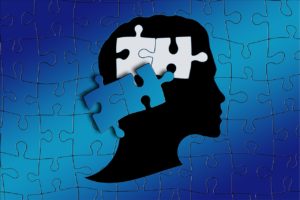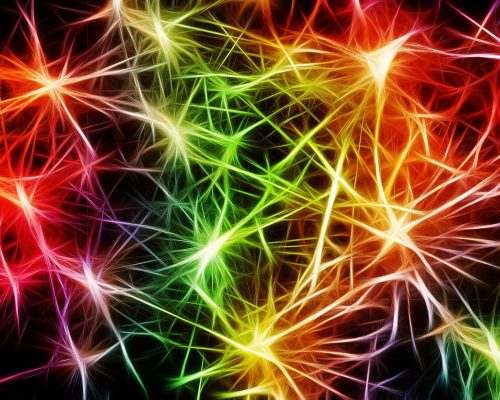Estimated reading time 6 minutes
Table of Contents
Introduction
Has your child has been diagnosed with a learning disability? Do you feel confused because your child is so smart, but still struggles to learn? Read more to learn about learning differences and spatial ability.
Some people say that kids with LD and ADD have learning differences, while others say they have learning disabilities. This website takes the position that learning disabilities, such as dyslexia and language-based learning disability, don’t come from neurological defects.
Instead, LD results from a person having a different brain structure with attendant strengths and challenges. This post, part one of four, explores the four areas of strength that people with learning differences can have.
The following article uses technical terms. See the Glossary at the end of the post for definitions.

LD, ADD, Learning Differences, and Spatial Ability
Disorientation
Back in the early 2000s, when I first began to specialize in music students with LD, ADD, ASD, and other special needs, I started to write a book on music and dyslexia.
Soon after, I stole one of the chapters from my book and used it for my website. This later formed the basis for the article What is LD & ADD, which I still have on my website.
What is LD & ADD still has good information, especially about disorientation. “What’s disorientation?” you might ask. It’s a term coined by Ronald Davis describing how highly visual people can have problems perceiving their environment. Namely, the learning differences stem, in part, from the spatial ability.
According to Davis, people with high spatial reasoning can see their imaginations at if they were real. This can interfere with reading, writing, math, reading music notation, musical fingering, and even correctly seeing the notes on the piano. For an in-depth discussion of disorientation, including visual aids: click here.
More Than Just Spatial Reasoning
I wrote What is LD & ADD almost 20 years ago, and more research on dyslexia has come out since then. The information in that article holds up well. However, the article only gives you part of the picture.
It focuses on learning differences and high spatial ability, and how this connection impacts education. This ability can be a two-edged sword, leading to both cognitive strengths and challenges that happen as a result from tradeoffs in the LD brain structure.
New information has come out since then, which explains why I wanted to write this post. For example, back in the early 2000s, the LD literature didn’t make a distinction between visual ability and spatial ability. Theses LD strengths can overlap, but they don’t always.
In addition, Brock and Fernette Eide say that the LD brain can have three more areas of strength, with biological tradeoffs between strengths and challenges.

How the Brain's Structure Influences Learning Differences and Spatial Ability
The Dyslexic Advantage talks about the strengths and challenges that LD and ADHD kids face. The authors make the case that the dyslexic strengths and challenges arise not from a hemisphere dominance issue. Rather, they claim it has to do with how tightly packed the neurons are within the brain. This information has come to light through recent research.
According to the authors, the brain has stacks of neurons in columns for processing similar types of information and actions. These columns connect together using wire-like nerve bundles called axons. The axons allow the neurons to process as larger groups for much higher order thinking with emergent abilities.
The spacing between the nerve columns, and therefore the length of the axons, will affect the type of processing the brain will be best suited for.
People with short axons excel at detail-oriented work. They pick up processes easily (such as math facts or grammar rules) and quickly reach automaticity for repetitive, learned tasks. Your typical learner students do well with these tasks.
People with long axons will be global, big picture thinkers. They struggle at the tasks that typical learners excel at. On the other hand, they have strengths in spatial abilities, episodic memory, and intuitive thinking. Kids with LD and ADD show these traits.
However, don’t confuse spatial ability with visual imagination ability – though some people combine both. Spatial reasoning can be non-visual, such as: somatosensory (tactile and muscular), or a sense of movement or process.
Thus, spatial abilities are one source of the learning differences. Again, the strengths and challenges result not from a disease or defect, but from brain structure.

Learning Differences and Spatial Ability: Four Areas of Strength
Kids with LD will have four areas of potential strength as well as other areas of potential challenge. Not all dyslexics will have all of the strengths, but all dyslexics will have at least one. Eide and Eide list the strengths as:
- First: “three-dimensional spatial reasoning and mechanical ability
- Second: “the ability to perceive relationships like analogies, metaphors, paradoxes, similarities, differences, implications, gaps, and imbalances
- Third: “the ability to remember important personal experiences and to understand abstract information in terms of specific examples
- Fourth: “the ability to perceive and take advantage of subtle patterns in complex and constantly shifting systems and data sets” (5).
Therefore, people with learning differences have, not only spatial abilities, but will also have strengths in global thinking, episodic memory, and intuitive cognition.

The Advantages and Disadvantages of Learning Differences and Spatial Ability
For a detailed discussion of learning differences and spatial abilities, I suggest you read What is LD & ADD. However, I’ll give you a quick overview here.
With spatial reasoning, people store information in their brains on a spatial matrix. They can then rotate, move around, and mentally transform the information.
“This mental spatial coordinate system can help us interact with the real world, determining where we are in relation to other objects, or the sizes and shapes of those objects, or whether and how these objects are moving or changing in orientation.
“It can also help us reason about imaginary spatial environments or objects” (Dyslexic Advantage 56).
Math and science people use these abilities to manipulate information. Artists and engineers use it to imagine new projects. Musicians use it to imagine overlapping melodies, rhythms, and tone colors. Athletes use it to imagine how they need to move in space and time.
However, the same abilities can lead to symbol reversals, such as letters, numbers, or notes on a music staff. To help kids with LD master abstract symbols, we need to use visual and concrete multisensory teaching methods.
In music, color coding helps LD and special needs students to decode the score. For the science behind color coded music read: Color Coding Music for Success.
For practical examples read:
- How to Color Code Music Notes for LD & Special Needs Distance Learning
- How to Color Code Rhythm to Empower LD & Special Needs Students
- Color Coding Instruments for LD and Special Needs Student Success
- How to Color Code Tab for LD Achievement
- Playing the Piano with Color Coded Notes
- Playing Piano with Color Coded LH Notes

Concluding Thoughts on Learning Differences and Spatial Ability
By now you should understand how learning differences and spatial abilities relate to each other. The same abilities can be beneficial and can also cause learning struggles. We need to teach kids how to take advantage of the strengths while also using multisensory strategies to redress the learning issues.
In particular, color coding helps LD and ADD musicians to learn to read music. Moreover, it remains an effective means of teaching other special needs students as well.
In future posts, we’ll look at how global thinking, episodic memory, and intuitive cognition impacts learning.
© 2022 Geoffrey Keith
Join me for in-person or online lessons today!
Glossary
Harmony and Melody Tune Differently
Have you ever felt embarrassed because someone said you sang or played out of tune? Does harmonizing seem like a puzzle you can’t solve? Knowledge is power. I will show you how harmony and melody tune differently, and how it impacts singing and playing in tune. Estimated reading time 4 minutes.
Read MoreColor Coding Musical Instruments for LD & Special Needs Student Success
Does your student confuse the notes on the instrument? Learn how color coding musical instruments leads to LD and special needs success. Estimated reading time 4 minutes.
Read MoreShatter the Perfectionism Chains in Music Lessons
Are you a music teacher? Do you have a student who struggles with obsessive perfectionism? While having a high standard is a good thing, obsessive perfectionism can be debilitating. Keep reading to learn how to shatter the perfectionism chains in music lessons. Estimated reading time 3 minutes.
Read MoreHow to Color the Music Score to Successfully Focus Special Needs and LD Students on Features of the Sheet Music
Color does not need to be limited to color-coding. Bring staccato, legato, pedal, dynamics, and accents to the foreground by using a highlighter and red pen. Estimated reading time 2 minutes.
Read More




